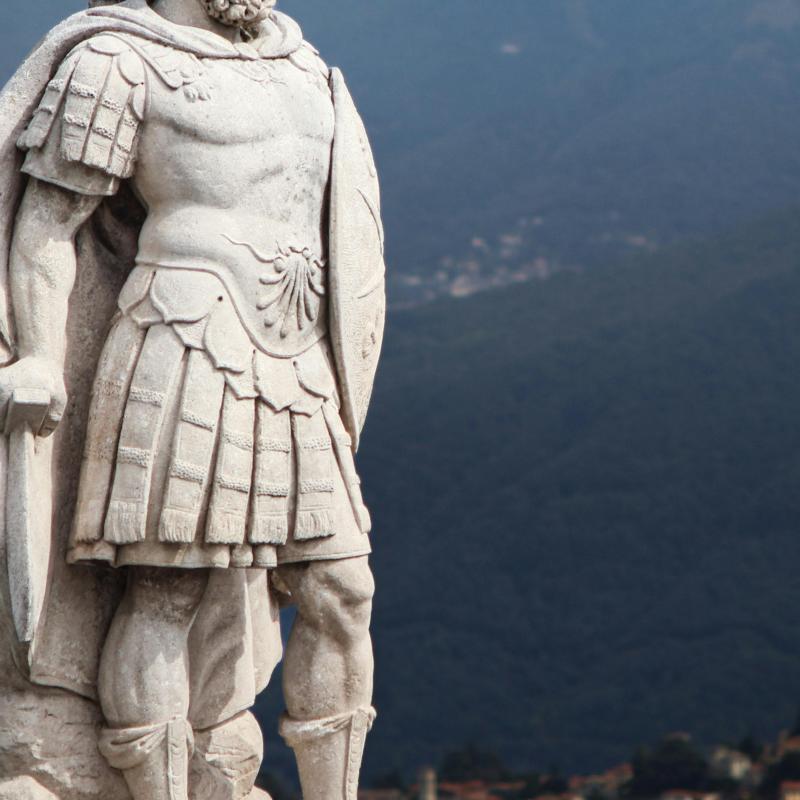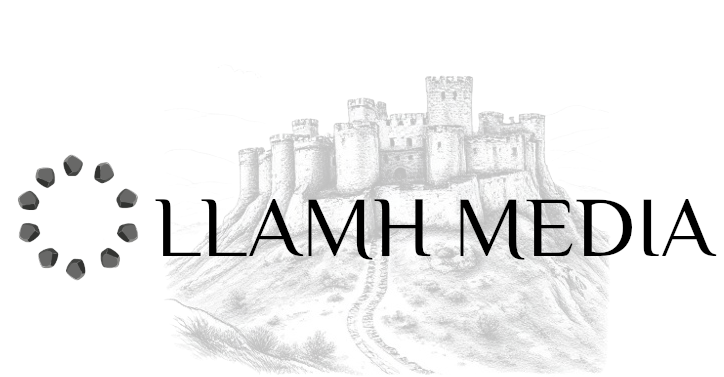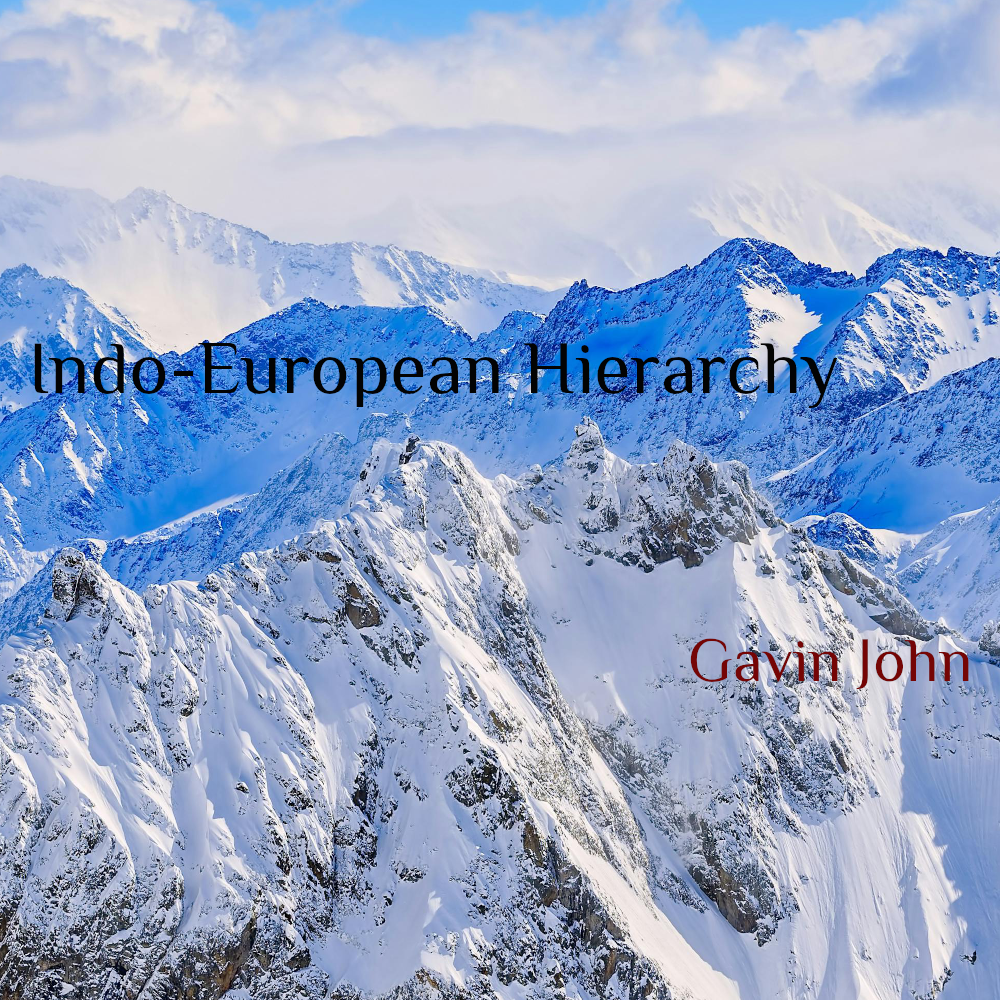To understand who we are, we must know who we were. The fabric of our ancestors is worth understanding. The sacrifices that they made and their struggles have all had an affect on us individually and collectively. I will take you on a journey, a journey to understand the structure of our ancestral civilisation. Lets investigate the Indo-European Hierarchy.
An Outline of Indo-European Hierarchy
The Indo-European hierarchy, evident across many ancient cultures of the Indo-European speaking peoples, was typically divided into three main social functions: priests, warriors and commoners. This tripartite division, first proposed by the French philologist Georges Dumezil, reflects a structured social order that pervaded Indo-European societies from early times, with distinct roles assigned to each class to maintain social cohesion.
The priestly class was responsible for religious rituals, sacrifices and maintaining the spiritual connection between the gods and humans. They held a significant amount of power due to their perceived divine authority and were entrusted with preserving sacred knowledge. In ancient India, this role was embodied by the Brahmins, while in the ancient Celtic world it was Brehons who assumed this role.
The warrior class held the duty of defending the community and expanding territorial power. For example, many of the Kings and royalty came from the warrior caste, especially as these societies developed. They possessed courage and strength and were in charge of protecting the societal structure. For example, in early Vedic society the Kshatriya class occupied this position.
The commoners or producers were the third group, including farmers, artisans and herders. They sustained society. This group was responsible for the majority of labour, freeing up time for the other classes to dedicate themselves to ‘higher’ callings. The Vaisya class in Ancient India and the freemen of ancient Germanic tribal society occupied this position.
Now, lets dive a little deeper.
The Priestly Caste
In Celtic, Roman and Germanic cultures, the priestly caste played a crucial role in religious, social and sometimes political life. Each of these societies has a unique system of priesthood, though they all shared the belief that priests acted as intermediaries between the human world and the divine.
Celtic Priestly Caste
In Celtic society (Celtic meaning those societies which are now considered to have spoke a Celtic language, I will return to this), the Druids were the highest-ranking priests. They held immense authority, not only in religious matters but also in legal, educational and political arenas. Druids were responsible for conducting sacrifices, interpreting the will of the gods and overseeing religious festivals. They also acted as judges and teachers, preserving oral traditions and knowledge through memorisation, as Celtic cultures often avoided writing down their sacred lore. Their influence was so great that they could even halt battles through their command. Both warriors and commoners revered the Druids, they were truly at the apex of Celtic society.

Roman Priestly Caste
In early Germanic societies, there was no distinct or centralised priestly caste like in Rome of Celtic lands. Religious leaders, often referred to as Gothis or Vitkis, were usually warriors or chieftains who performed rituals and sacrifices to the gods. The Germanic priests would preside over sacred groves and make offerings to gods like Odin, Thor and Freyr. Germanic priesthood was closely tied to the tribal structure, with leaders often embodying both religious and martial authority, reflecting the strong warrior ethos of their culture.
Germanic Priestly Caste
In Roman society, the priestly class was more structured and embedded within the political system. Pontiffs were the highest-ranking priests and the Pontifex Maximus was the head of the college of priests. However, this role eventually became a title held by Roman emperors. Roman priests, such as the Flamens and Augurs, conducted rituals, sacrifices and auguries (divinations based on interpreting the flight of birds or animal entrails. Unlike Celtic Druids, Roman priests did not exercise legal or educational functions; their roles were more ceremonial and entwined with state politics. Priests were often appointed from the elite class, further cementing the integration of religion and politics.
The Warrior Caste
In Celtic, Roman and Germanic societies, the warrior caste was essential to maintaining power, defending territories and expanding influence. These warriors often held high social status, as they were seen as protectors of their respective communities and symbols of strength and valour.
Celtic Warrior Caste
In Celtic societies, warriors were known for their fierce martial traditions. They maintained power, defended territories and expanded the influence of their kingdom. The Celtic warriors held a high position within society and were seen as it’s protectors. They fought with distinctive weapons, such as long swords, spears and oval shields. They were skilled in chariot warfare and would ride into battle bravely. Celtics warriors participated in warrior cults, where they honoured their deities. Deities such as Lugh, the god of light and war. The warrior’s loyalty to a chief of king was paramount. They would often engage in single combat, pitting themselves against other champions, while representing their entire tribe or kingdom.
The Roman Warrior Caste
In Roman society, the warrior class was organised into Roman legions. Roman soldiers were not a separate caste by birth but were drawn from various social strata. This may be due to a disintegration of the traditional Indo-European Hierarchy. However, elite warriors still hailed from noble families. Roam warriors were known for their discipline, training and advanced military strategy, which allowed Rome to conquer vast territories. The military ethos was undoubtedly central to Roman identity and successful military leaders often rose to political power. Various warrior cults would spring up, such as the cult of Mithras. There is evidence of this cult in the far stretches of the Roman empire, from North Africa to Britain.

Germanic Warrior Caste
Germanic warriors, much like their Celtic counterparts, were central to society. They often belonged to the nobility or elite clans. Germanic warrior bands, known as comitatus, were loyal to a chieftain or king. These warriors followed a strict honour code and their loyalty to their leader was paramount. Germanic warriors, renowned for their skill in melee combat, fought with weapons like spears, axes and swords. The Germanic warrior ethos was deeply tied to notions of bravery, kinship and fate. Warriors were connected to archetypes such as Odin, the All-Father who was associated with war, wisdom and frenzy. The famous berserker groups would often revere Odin and seek to enter this state of frenzy to achieve their military goals. Interestingly, it was these warriors who played a critical role in the eventual fall of the Roman Empire, as they clashed with Roman legions during the Migration Period.
The Production Caste
The productive class in Indo-European societies, which included farmers, artisans, herders and merchants was vital for sustaining the economic and material needs of society. Though they were not as prestigious as the warrior of priestly classes, they were just as important, enabling their cultures to thrive.
Celtic Productive Class
In Celtic societies, the commoners or Aes Dana included skilled artisans, farmers and traders. farmers grew cereals, raised cattle and provided the food needed to sustain the warrior elite and priestly Druids. Craftspeople, such as blacksmiths, carpenters and weavers were also highly respected for their skills in metalwork, pottery and textiles. The products they produced were crucial for both everyday life and warfare.
Roman Productive Class
In Roman society, the plebains (commoners) made up the majority of the population and were heavily involved in agricultural and artisanal labour. Farmers, particularly small landowners and tenant farmers, were the bedrock of Roman agriculture, producing grains, olives and wine. The Equites, a wealthy class of merhcants and landowners, played a significant role in trade and commerce. Though not part of the aristocracy of military elite, the productive class in Rome was critical in maintaining the empire’s economic strength and providing the food and goods necessary for expansion and governance.
Germanic Productive Class
In Germanic societies, the productive class consisted of freemen who worked the land, raised livestock and practiced various crafts. farmers were particularly important, as Germanic society was predominantly agrarian. Livestock, especially cattle, held economic and symbolic value, often being used as currency. Artisans produced everyday goods, including weapons, tools and textiles. The productive class in Germanic society lived under the protection of warrior cheiftains but maintained autonomy through their vital contributions to the community’s economy. Across all three cultures, the productive class indispensable, sustaining the society through their labour, even if they did not hold the same political or spiritual power at the upper classes.


